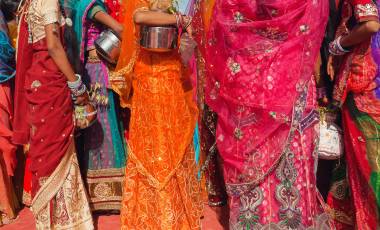Read time – 5 minutes
Much more than the sum of its parts, the Indian subcontinent is a land where ancient and modern fuse to create something altogether more wonderful.
So where will you head – the fortresses, bazaars and ghats of the north, or the lush villages and exotic temples of the south?
North India
Feel the magic everywhere you look – from Delhi’s colourful bazaars to the Ganges’ ancient rituals. Home to the Taj Mahal, and the ‘Pink City’ of Jaipur, India’s Golden Triangle is perfectly named. The teeming cities, ochre temples and lavish palaces of North India stand testament to how human intervention can enhance, not detract from the natural world.
This is the land of Jaipur’s ‘Palace of the Winds’ and Royal City Palace, Agra’s Red Fort and the sublime Taj Mahal. Visit North India and from Delhi to Varanasi, you can soak up the magic of a land that’s as spiritual as it is seductive.
We asked local leader Ajay Gupta to share his favourite sights, sounds and sensations.
“Our country has a vast demographic and cultural heritage, which all culminate perfectly in northern India. The sights, sounds, smell, and the people themselves are the essence of North India. Our culture teaches us to welcome and treat the guest as a manifestation of God.
When I ask my guests what attracted them here; they say the sights and food, but ask them why they come back, and they’ll say – the people. In my opinion, the distinct identity of North India lies in its ability to provide beautiful experiences to every traveller, whatever’s on their wish list; monuments, history, culture, education and even to trace family roots.
What’s so great about it as a tourist destination is that it’s a part of our country where you can visit and experience various cultures together on a short trip. The Mughal sights in Agra, blue and pink cities of Rajasthan, traditional and contemporary culture in Old Delhi – a storehouse of many stories.
The proximity of the Himalayas can’t help but add another thrilling dimension too, making a quick trip to Ladakh, Kashmir and the hill stations easily possible. Our appreciation and tolerance of each other, and towards many religions and faiths living under one roof is what makes me so proud to show my corner of the world to our guests.”
“Pretty much everything is a highlight,” enthuses Exodus customer Morgan Wallace. “Dawn at the Taj Mahal, sunrise over the Ganges at Varanasi, a rickshaw ride through Delhi…But I think the highlight has to be seeing a tiger up close at Ranthambore!”
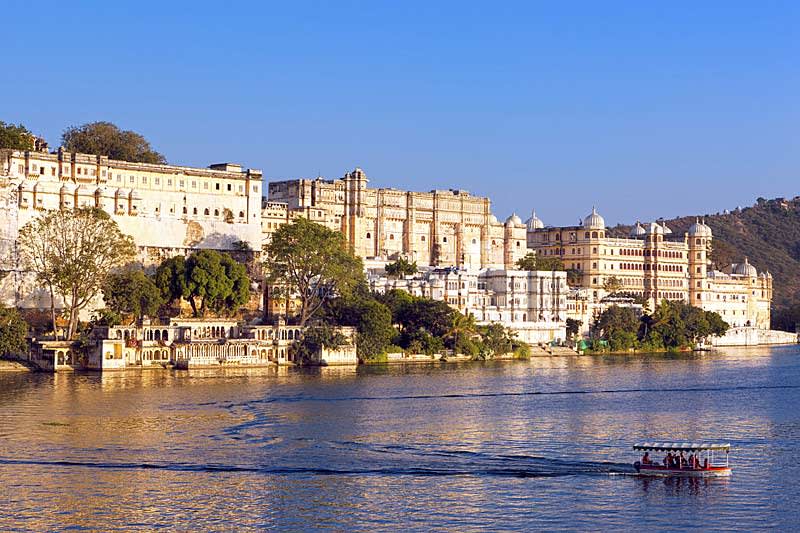 City Palace in Udaipur
City Palace in Udaipur No trip to North India could ever really be complete without a visit to the capital of Rajasthan. The pink stucco-clad wonder that is Jaipur, a roll-call of palaces, forts and graceful squares. The lakeside palace of Udaipur offers even more mystical beauty.
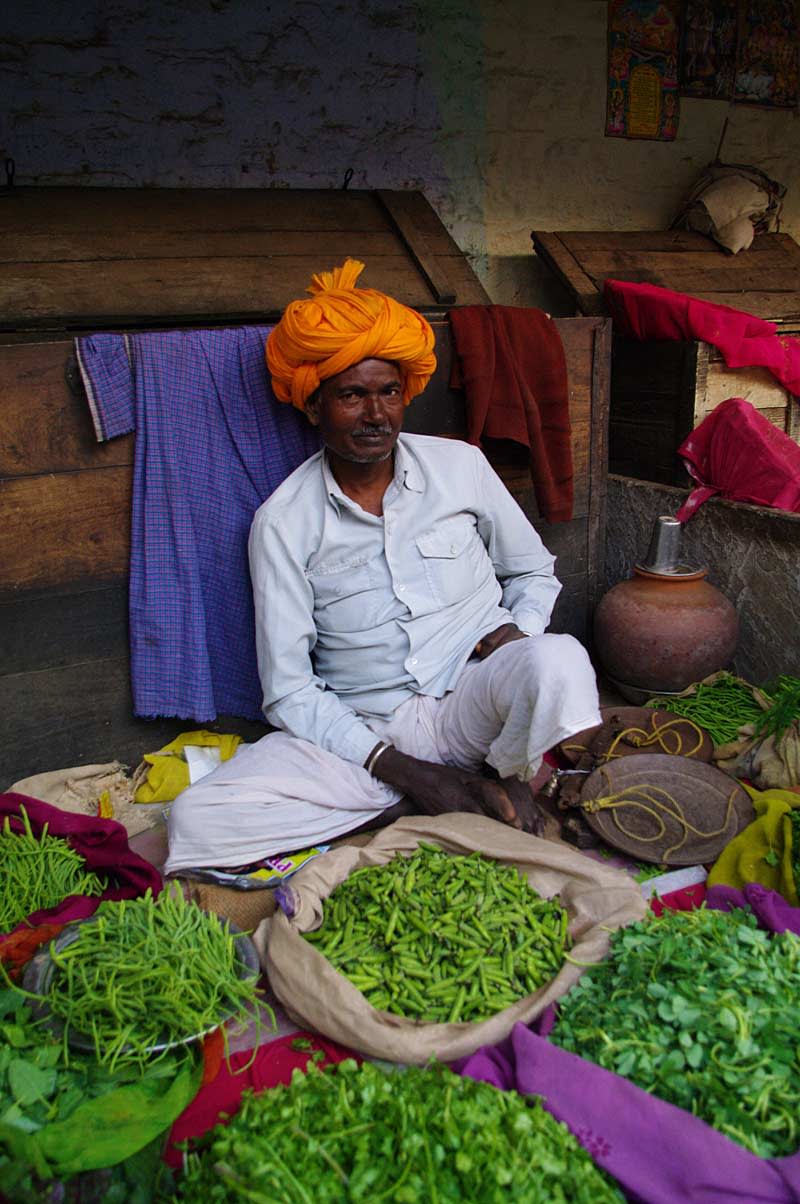 Bundi vegetable market
Bundi vegetable market Rajasthan’s imposing forts, palaces and fortified cities reveal a land with a turbulent past, and we’ll explore the best of them on this tour. But Bundi, with its charming streets cascading down a mountainside to the lake below, is a firm favourite.
As the foothills of the Himalaya reach ever higher, northern India’s contours find space for temples, hill stations and forts perched on seemingly-impossible outcrops. We visit Amritsar’s Golden Temple and McLeod Ganj, home to the Dalai Lama.
South India
Lush, languid and replete with legends – South India shows the softer side of the subcontinent, with its frill of pale sand beaches, its estuarine backwaters and its steamy forests.
“The landscape really is lovely, it’s not surprising Kerala is called ‘God’s own country’,” says Exodus leader, Santosh Kumar of his home patch – in the deep south of India. Food is everything here. The climate – slightly cooler than the north, and with its fair share of rain from June to September – informs the region’s dishes: rich with creamy coconut, enlivened with delicate spices and fired up with chilli and tamarind.
“Everything is influenced by coconut. South Indian food is infused with spices and served on a banana leaf. It reflects the tropical landscape that’s dotted with spice plantations,” Santosh says. The landscape of forested hills and sinewy rivers has something of the rolling patchwork of England about it.
“It’s a gentler, more relaxing experience than the often rugged and frenetic north,” Santosh says. “It definitely offers a more leisurely experience for those visiting India for the first time. A gentler introduction.” And that introduction could be on the sublime Keralan backwaters – bedding down for the night on a traditional houseboat, or exploring the charming colonial architecture of Pondicherry: a little outpost of France set adrift in the Indian Ocean.
Then again, it could be the mist-shrouded hill stations of the British Raj: escape routes from the searing heat. “Beautiful cities, ancient spice ports, colourful temples and the vast scenery: it’s all here.” Pressed for favourite experiences, Santosh talks of the sandy beaches of Kerala, the unique and soaring temples of Tamil Nadu – glittering punctuation marks, soaring heavenwards into the azure blue skies.
Wandering through the streets, caves and rock carvings of the ancient trading town of Mahabalipuram, marvelling at the magnificently carved Sri Meenakshi temple – a 2,000-year-old skyscraper rising from the heart of the ancient city of Madurai, exploring the tea plantations of Kerala – these are the indelible experiences of South India.
Exodus customer Sylvia Wilson loved our exploration of the southern states of Kerala and Tamil Nadu – their tea plantations, wildlife sanctuaries and lagoons. “Santo, our guide, had so much knowledge on absolutely everything. The picture he gave us of village life made it very personal.
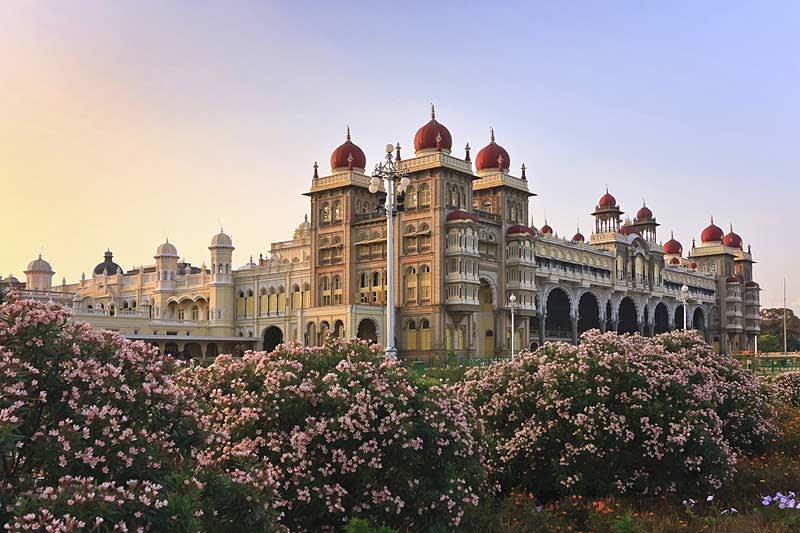 Mysore Palace
Mysore Palace India’s tropical south has long been in the sights of explorers. Its dazzling colonial architecture punctuates its cities, spice ports and those lofty retreats from the summer heat – the charming hill stations of the British Raj.
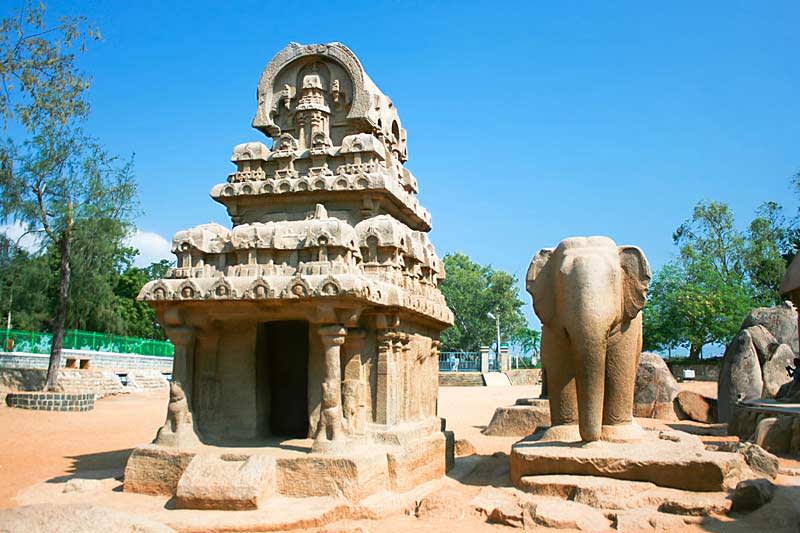 Five Rathas temple
Five Rathas temple The ‘Golden City of a Thousand Temples’ in Kanchipuram is just one, suitably dizzying highlight on this added-comfort exploration of southern India’s charms. Staying in stylish hotels (with a night on a Keralan houseboat) we’ll inspect the wildlife of Bandipur National Park.
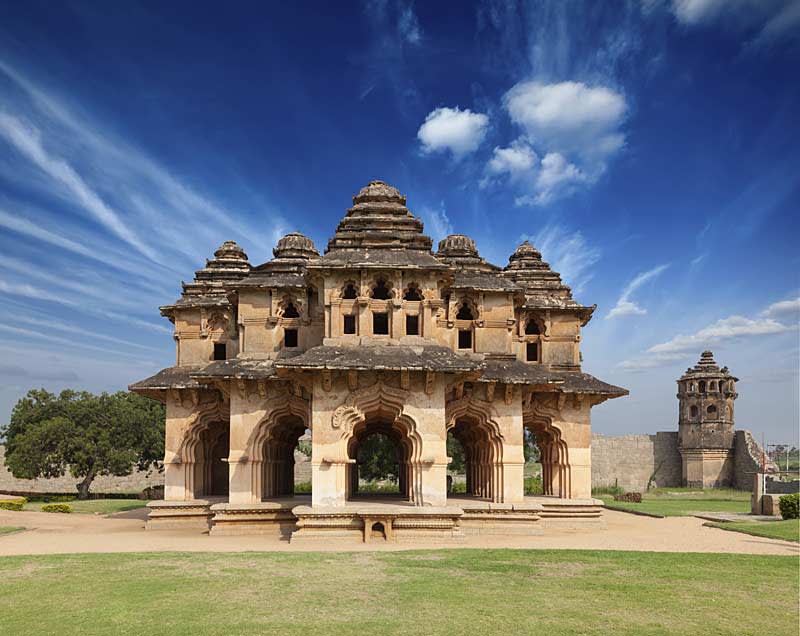 Lotus Mahal, Hampi
Lotus Mahal, Hampi This 31-day trip is your best-ever chance to sample the country’s spectacular highlights. We’ll admire the palaces of Rajasthan and the hill stations from the British Raj days, spend a day at the beautiful ruined city of Hampi, visit Ranthambore and the beautiful beaches of Goa.
Still can’t decide? See our trips to both South and North India below.
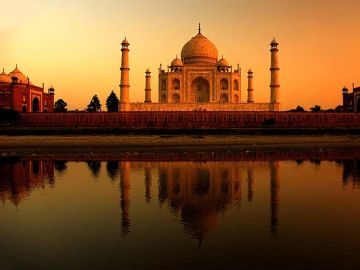
 Taj Mahal at sunset
Taj Mahal at sunset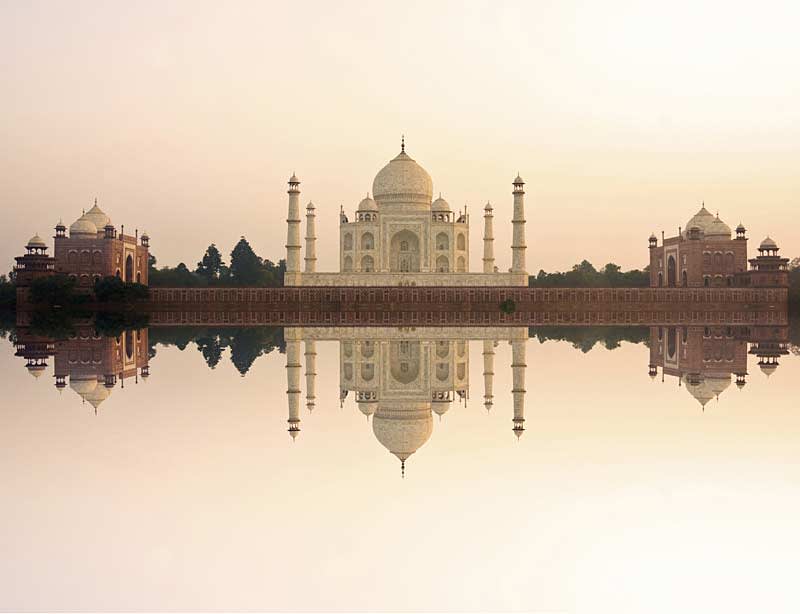
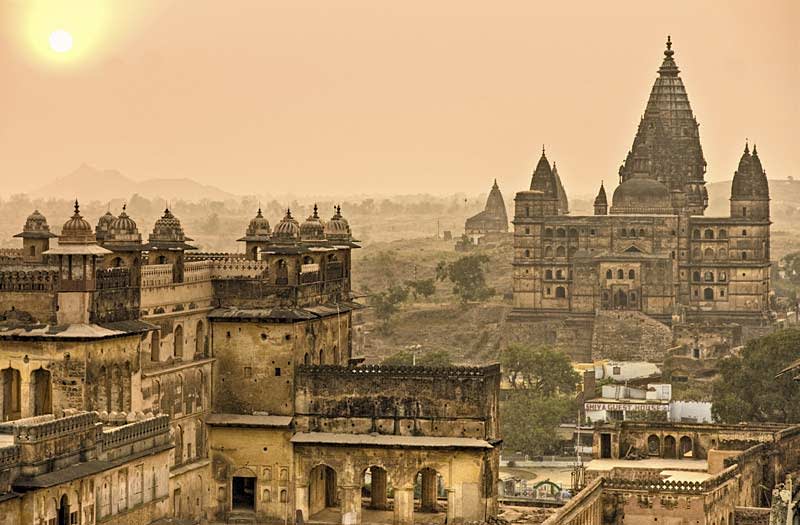

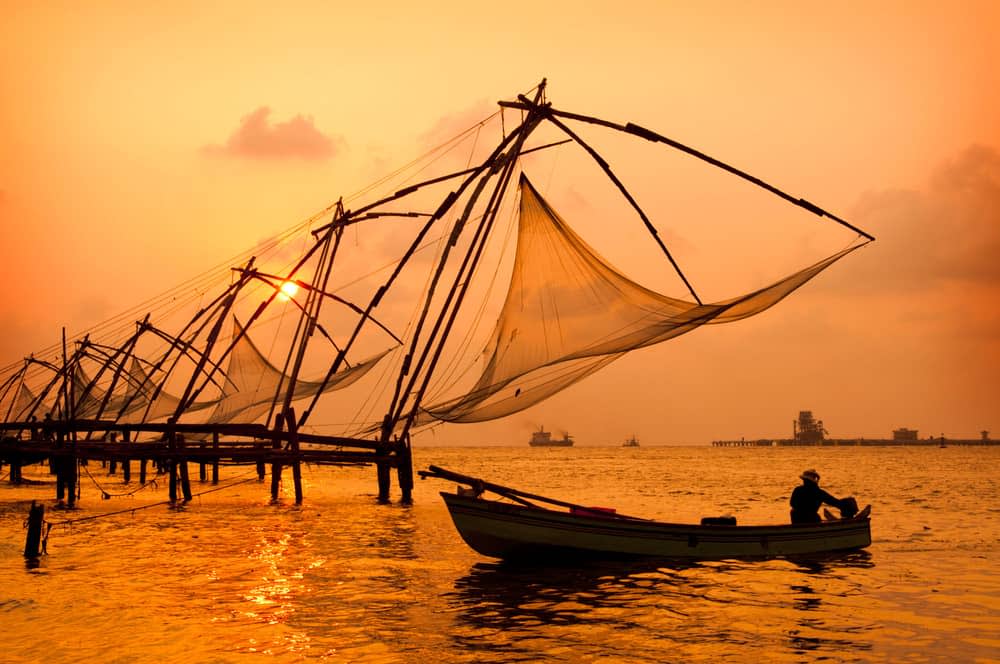 Sunset
Sunset

